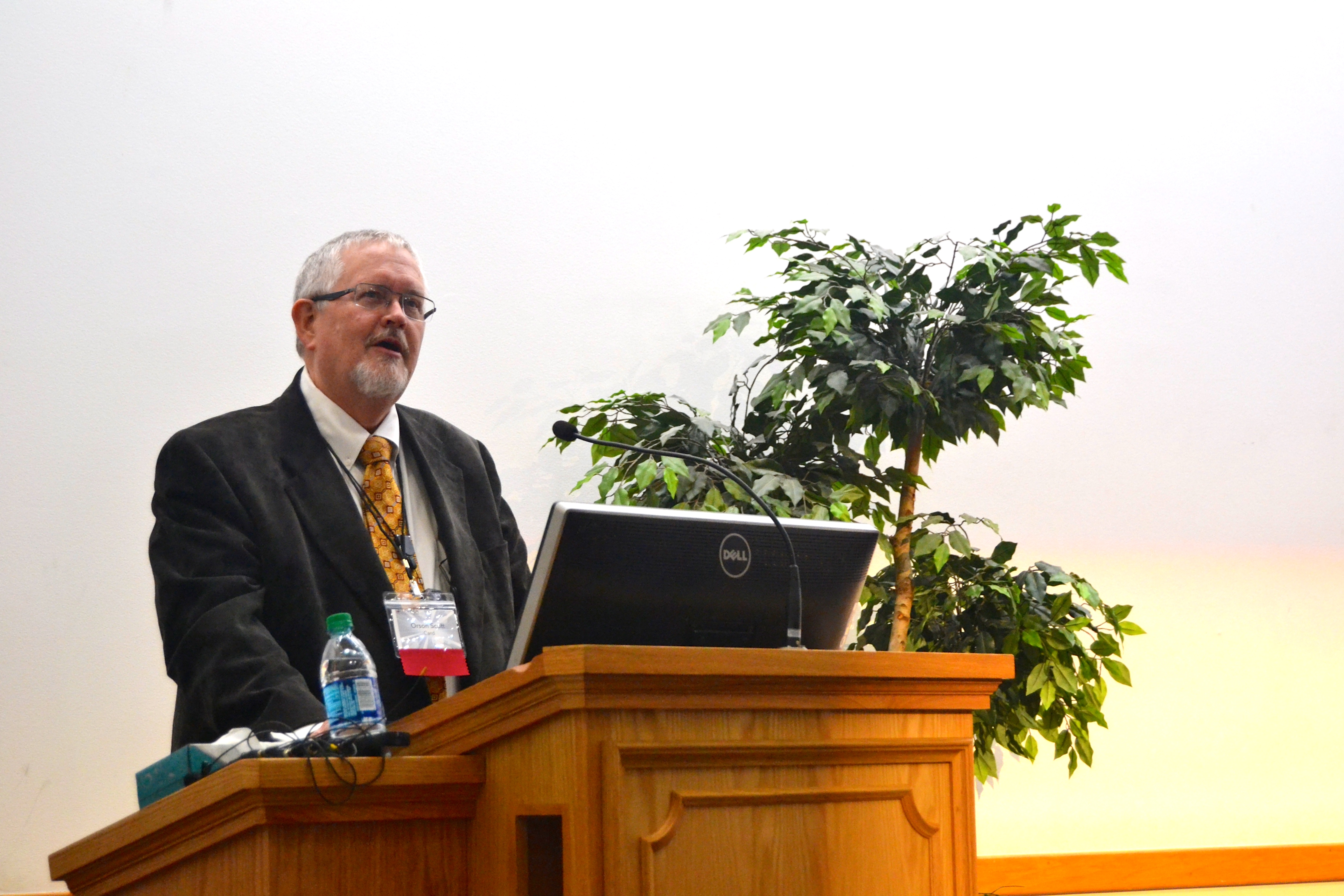
Glen Larson’s 1978 sci-fi TV series “Battlestar Galactica” features twelve tribes whose history began on Kobol, ruled by a quorum of twelve and refers to marriages as sealings. Looking at Larson’s reflection of The Church of Jesus Christ of Latter-day Saints in his work, Orson Scott Card decided at the beginning of his career to wall off his religion from his works.
Card, a science fiction writer who has won numerous awards over his 40-year career, was the final keynote speaker at the LDS Publishing and Media Association’s fourth annual conference at BYU on Nov. 3. His presentation highlighted how his relationship with his faith in his work has evolved throughout his career.
Card began his career by writing plays at BYU for his theater troupe. He said the main source of inspiration for these plays came from the Book of Mormon and church history. However, the plays proved to be insufficient to support him financially, Card said.
“My theater company didn’t lose that much money, but it lost more money than I had,” Card. “I needed to make more money.”
A full-time job at BYU press as an editor helped alleviate some of Card’s financial troubles, but it wasn’t enough. He began working on an idea he had when he was 16 about soldiers being trained in outer space in three-dimensional combat, which eventually became his award-winning novel, “Ender’s Game.”
As Card made the transition to writing science fiction, he said he realized his audience was changing. He was no longer writing to Latter-day Saints in Provo, but a much broader audience.
“I knew that in science fiction, one of the cardinal rules is God cannot be a computer,” Card said. “You can have Zeus anytime, as long as he is a computer.”
Card said he realized he was going to need to distance himself from his faith in his works. “I didn’t want to be the Mormon sci-fi writer,” Card said. “I deliberately kept all Mormon references out of my earliest work.”
Card arrived at his first major science fiction writer’s convention with “Ender’s Game” and “A Planet Called Treason.” He said he wrote both of these books in line with his rule of keeping his religion and culture separate from his work.
However, at the convention, a man who recognized him him as the Author of “A Planet Called Treason” assumed he was a Latter-day Saint, stating only a Mormon could have written the book.
Card said he reread the book and realized the book was “painfully Mormon,” but in a way not as easily recognized as Larson’s “Battlestar Galactica.”
“I learned that I didn’t have to think about putting in Mormon stuff to write Mormon fiction. Anything I wrote was going to be Mormon fiction,” Card said. “My first response was great relief. It meant there was no further need for me to wall off my faith.”
Card’s new take on writing allowed him to publish works like the “Homecoming” saga, which was the Book of Mormon set in space, he said.
Card said his best-selling book is “Ender’s Game,” but it was never intended to be a young adult book and does not make concessions for younger reader. However, he received a lot of positive feedback from teachers and students who either taught or were students who struggled with reading.
“Ender’s Game” follows Andrew “Ender” Wiggin, a child prodigy enlisted in a worldwide space military training program. The novel follows Ender through strategic military training to his victory over an insect-like alien race, according to The Guardian. The novel spawned multiple sequels, sub-series, and a 2013 film starring Asa Butterfield, Hailee Steinfeld and Harrison Ford.
“How did they identify with Ender — this genius kid?” Card asked. “At first I thought it was about his isolation and loneliness because every kid in high school is lonely.”
As Card was trying to get a script ready for a film, he said he faced this dilemma again. When he was first writing drafts, only those who had read the book liked the drafts. Ender was also absent from initial drafts, according to Card.
Card reworked the script and approached the stories to try and find how to capture the essence of this main character, but failed every time. Finally, he realized it was about Ender and the soldiers he led.
“The reason ‘Ender’s Game’ worked was because readers wanted to be in Ender’s army,” Card said. “They wish their boss was like Ender. They wished their teacher was like Ender.”
Card said Ender leads other students through persuasion, meekness, gentleness and pure knowledge without hypocrisy or guile. Card had made Ender to be a good leader in accordance with principles taught in Doctrine and Covenants section 121.
“I had no thought about what would make Ender a good commander,” Card said. “I just had him do what any good person would do.”
Card said it took him 15 years and 20 drafts to realize he put section 121 in Ender’s Game unconsciously. He said he had never written to proselytize, but his religious beliefs were inherently present in his works.
“The principles in section 121 are not true because Christ taught them, Christ taught them because they are true,” Card said. “When we insert our deep understanding of gospel truths into the stories we tell, we are not proselytizing. We are encouraging people to live a more Christlike life.”




